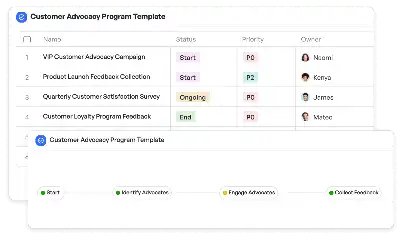Supply Chain Inventory Allocation Model
Achieve project success with the Supply Chain Inventory Allocation Model today!

What is Supply Chain Inventory Allocation Model?
The Supply Chain Inventory Allocation Model is a strategic framework designed to optimize the distribution and allocation of inventory across various nodes in a supply chain. This model is crucial for ensuring that the right products are available at the right locations to meet customer demand while minimizing costs. In the context of supply chain management, inventory allocation involves analyzing demand patterns, transportation costs, and storage capacities to make informed decisions. For instance, during peak seasons, retailers rely on this model to ensure shelves are stocked adequately without overburdening warehouses. The importance of this model lies in its ability to balance supply and demand efficiently, reduce wastage, and enhance customer satisfaction.
Try this template now
Who is this Supply Chain Inventory Allocation Model Template for?
This template is ideal for supply chain managers, logistics coordinators, and inventory analysts who are responsible for managing inventory across multiple locations. It is particularly useful for industries such as retail, manufacturing, healthcare, and food distribution, where inventory allocation plays a critical role in operations. Typical roles that benefit from this model include demand planners who forecast product needs, warehouse managers who oversee storage capacities, and procurement specialists who coordinate with suppliers. For example, a logistics coordinator in the automotive industry can use this model to allocate parts to manufacturing plants based on production schedules.

Try this template now
Why use this Supply Chain Inventory Allocation Model?
The Supply Chain Inventory Allocation Model addresses specific pain points such as overstocking, stockouts, and inefficient distribution. By using this model, businesses can optimize inventory levels, reduce transportation costs, and improve service levels. For instance, in the pharmaceutical industry, this model ensures that critical medications are distributed to hospitals and pharmacies based on real-time demand, preventing shortages during emergencies. Additionally, it helps in identifying bottlenecks in the supply chain, enabling proactive measures to mitigate risks. The model's ability to integrate data analytics and predictive algorithms makes it a powerful tool for decision-making in complex supply chain scenarios.

Try this template now
Get Started with the Supply Chain Inventory Allocation Model
Follow these simple steps to get started with Meegle templates:
1. Click 'Get this Free Template Now' to sign up for Meegle.
2. After signing up, you will be redirected to the Supply Chain Inventory Allocation Model. Click 'Use this Template' to create a version of this template in your workspace.
3. Customize the workflow and fields of the template to suit your specific needs.
4. Start using the template and experience the full potential of Meegle!
Try this template now
Free forever for teams up to 20!
The world’s #1 visualized project management tool
Powered by the next gen visual workflow engine




